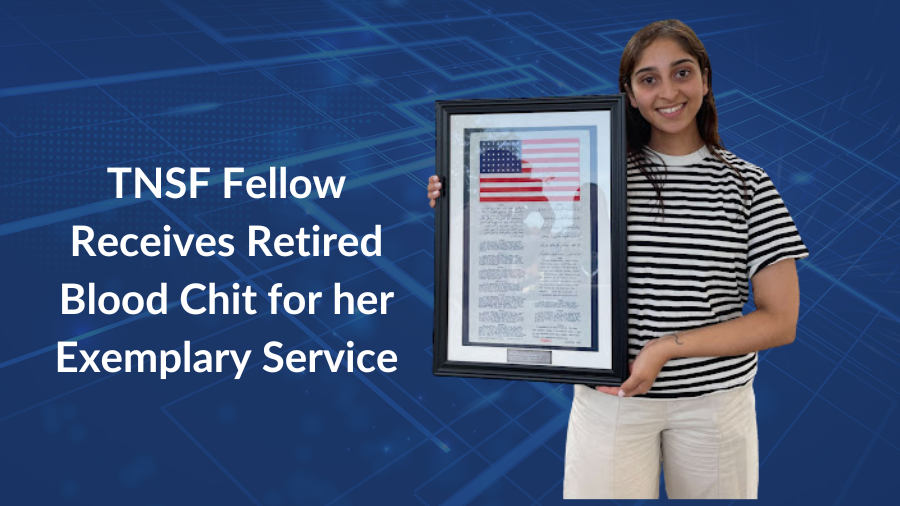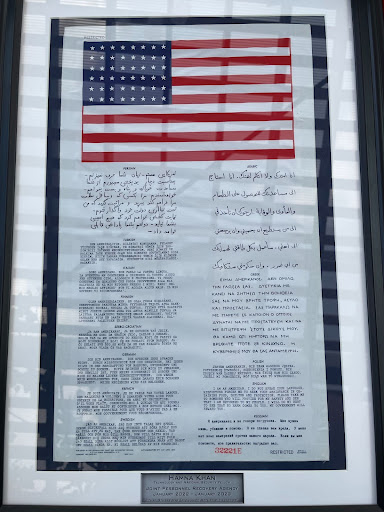
TNSF Fellow Receives Retired Blood Chit for her Exemplary Service

Hamna Khan, an alumna of a National Security Innovation Network (NSIN) fellowship, received a retired Blood Chit from Joint Personnel Recovery Agency (JPRA) for her contributions to a second-generation emergency search and rescue beacon that has the potential to fully innovate how civil search and rescue is conducted in the future.
Today, Blood Chits symbolize a debt owed by military personnel to a civilian who went above and beyond to assist the service member. JPRA, the organization that provided the Blood Chit, is designated as the Department of Defense (DoD)’s office of primary responsibility for DoD-wide personnel recovery matters, including combat search and rescue and survival, evasion, resistance, and escape (SERE). JPRA also provides specialized training to high-risk personnel, including lots and special-operators.


TNSF fellow Hamna Khan received a retired Blood Chit from Joint Personnel Recovery Agency (JPRA) for her exemplary contributions to the team throughout her NSIN fellowship.
Hamna spent her time in the fellowship going above and beyond for JPRA. Her mission was to help JRPA determine capabilities for a next-generation spread spectrum 406 MHz emergency distress beacon, and describe the supporting ecosystem as well as the next steps to fully transition the capability into Department of Defense (DoD) search and rescue functions.
“As a technologist, I’m passionate about civil service because it allows me to be a part of something much bigger than myself. The work that I get to do will impact how we save the lives of people in distress,” said Hamna.
During the fellowship, she conducted a DoD and inter-agency stakeholder survey on integrating a new distress-reporting-beacon technology. Afterwards, Hamna analyzed and recommend personnel, regulations, and policies that govern distress reporting devices to operate within the Search and Rescue Satellite Aided Tracking (SARSAT) System to integrate the new technology. In addition to survey scope and analysis, Khan created an official DoD report and briefed senior DoD leadership on his findings.
“Hamna has a unique ability to breakdown complex technical information into reusable bites of information for non-technical people,” Steven Kelly, Division Chief, Joint Personnel Recovery Agency (J7/9). “Her efforts created a collation of information sharing that did not exist. Further, she broke down complex technical information into reports and slides that can be reused to further this project in her absence.”
The Technology and National Security Fellowship (TNSF) placed early and mid-career technologists in paid, yearlong fellowships within government offices at the Pentagon or Capitol Hill to help advise on critical issues that intersect national security and technology. The Technology and National Security Fellowship address a technological knowledge gap that the offices of most top-level policymakers face. Participants can possess a diverse skill set ranging from software development to policy research.